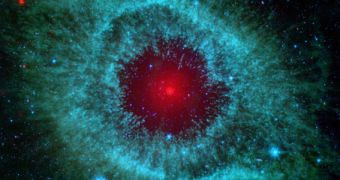Scientists with the Infrared Processing and Analysis Center (IPAC) at the California Institute of Technology (Caltech) in Pasadena announce the development of a new piece of software that will allow experts to find new objects of interest in the massive database being created by the NASA Spitzer Space Telescope. Asteroids, comets and near-Earth objects (NEO) are the main focus of the new software.
Thus far, astronomers have identified thousands upon thousands of NEO, asteroids and comets in the solar system, but statistical analyses of our neighborhoods indicate that we have only begun scratching the surface in finding objects of this type. The issue is that many of them are potentially dangerous to Earth, and large enough to cause large-scale extinction events.
Finding such objects is possible with infrared telescopes, but no dedicated instruments exist for this application. However, experts have noticed over the years that infrared space telescopes such as Spitzer sometimes detect asteroids before their “official” discovery. The new software is meant to make these “precoveries” easier, and the entire process automated.
In addition to providing astronomers with a significant early warning, these precoveries are important because they can reveal additional data about an object's path around the Sun, surface characteristics, shape, and other traits. Several months may pass between the time when an asteroid is seen for the first time, and the time when it is officially discovered.
By analyzing the differences in trajectory and appearance throughout this interval, astronomers can learn valuable data about these potentially hazardous objects. The new software was developed to make this task easier, and also to increase the frequency of precoveries by as much as possible. The program will be applied to Spitzer's 10-year database, arguably the largest of its type in existence.
“The precovery software works by calculating where a particular object was, or should have been, at various times in the past. Then the software searches a selected image archive for images that were taken in the right place at the right time,” IPAC task manager Steve Groom explains. The program is called Moving Object Search Tool (MOST).
According to the Caltech team, the software was originally developed for the Near-Earth Object Wide-field Infrared Survey Explorer (NEOWISE) mission, which used the decommissioned WISE telescope to search for NEO close to our planet. Even so, the program can be applied to other datasets as well, such as Spitzer's, or the one developed by Caltech's own Palomar Transient Factory.
“We can look for variations in brightness over time or owing to different viewing geometries, for example, by capturing the object in different phases of illumination by the Sun or orientations as it spins. We can infer details regarding its surface roughness or shape from these combined datasets from two or more instruments,” says researcher James Bauer.
The expert holds an appointment with the NASA Jet Propulsion Laboratory (JPL) in Pasadena, California. JPL works with the Spitzer Science Center at Caltech to manage the telescope for the NASA Science Mission Directorate, in Washington DC.

 14 DAY TRIAL //
14 DAY TRIAL //